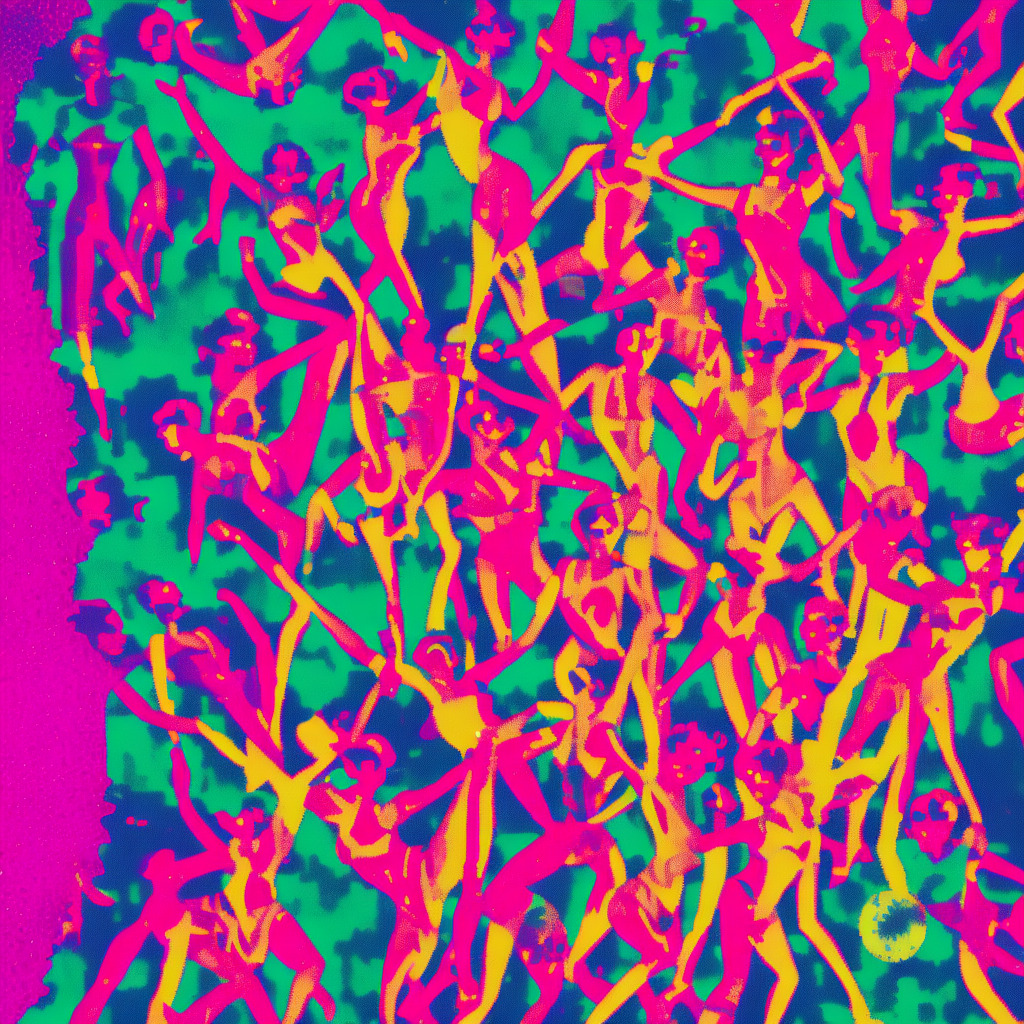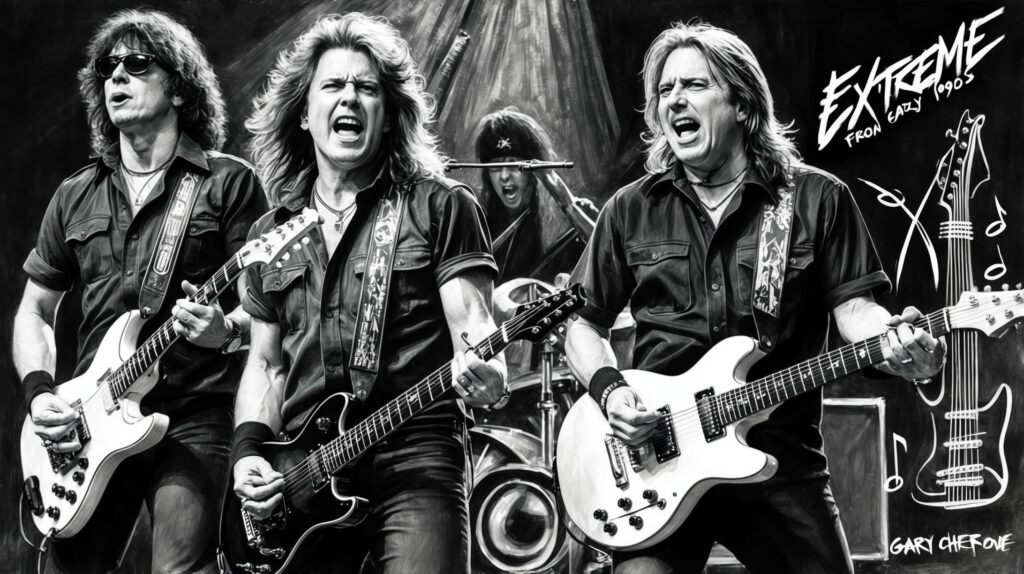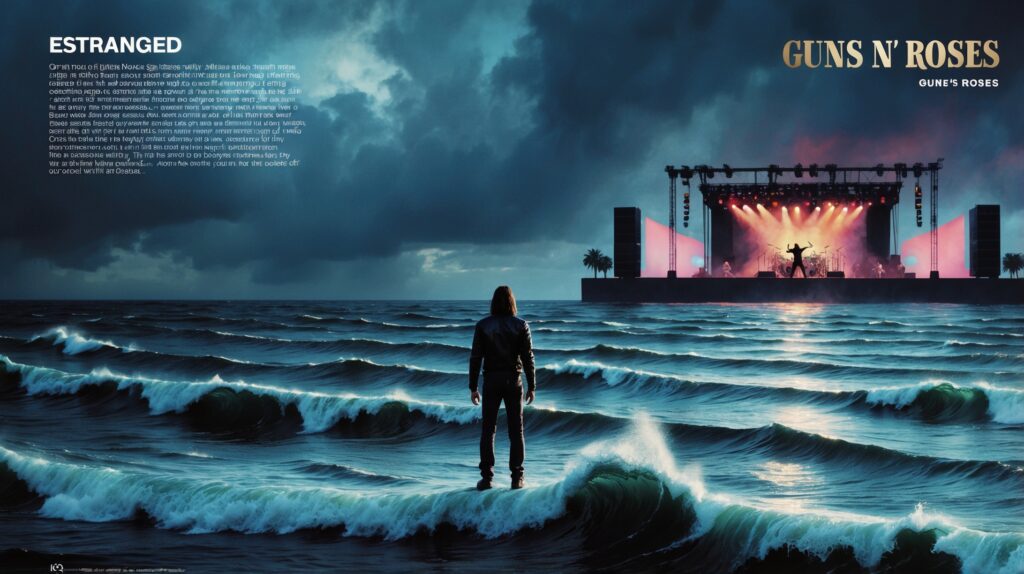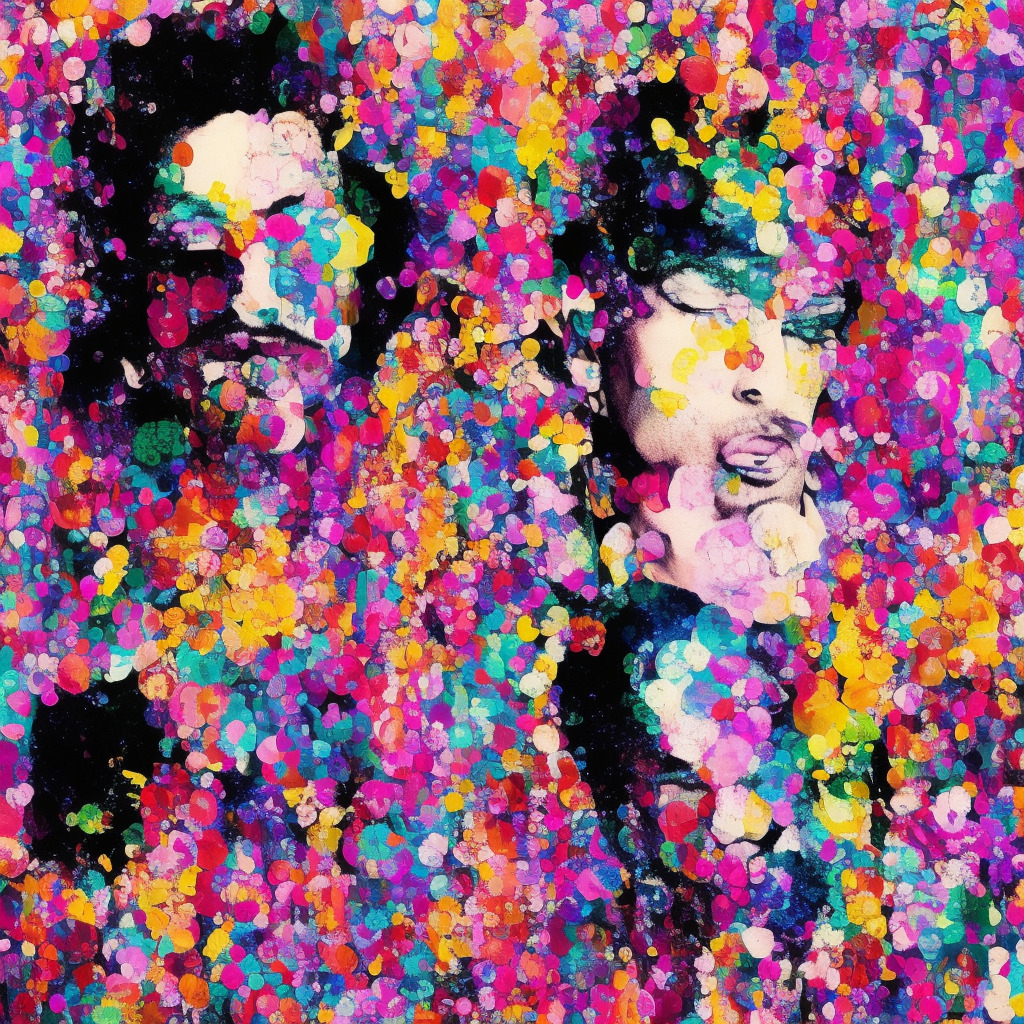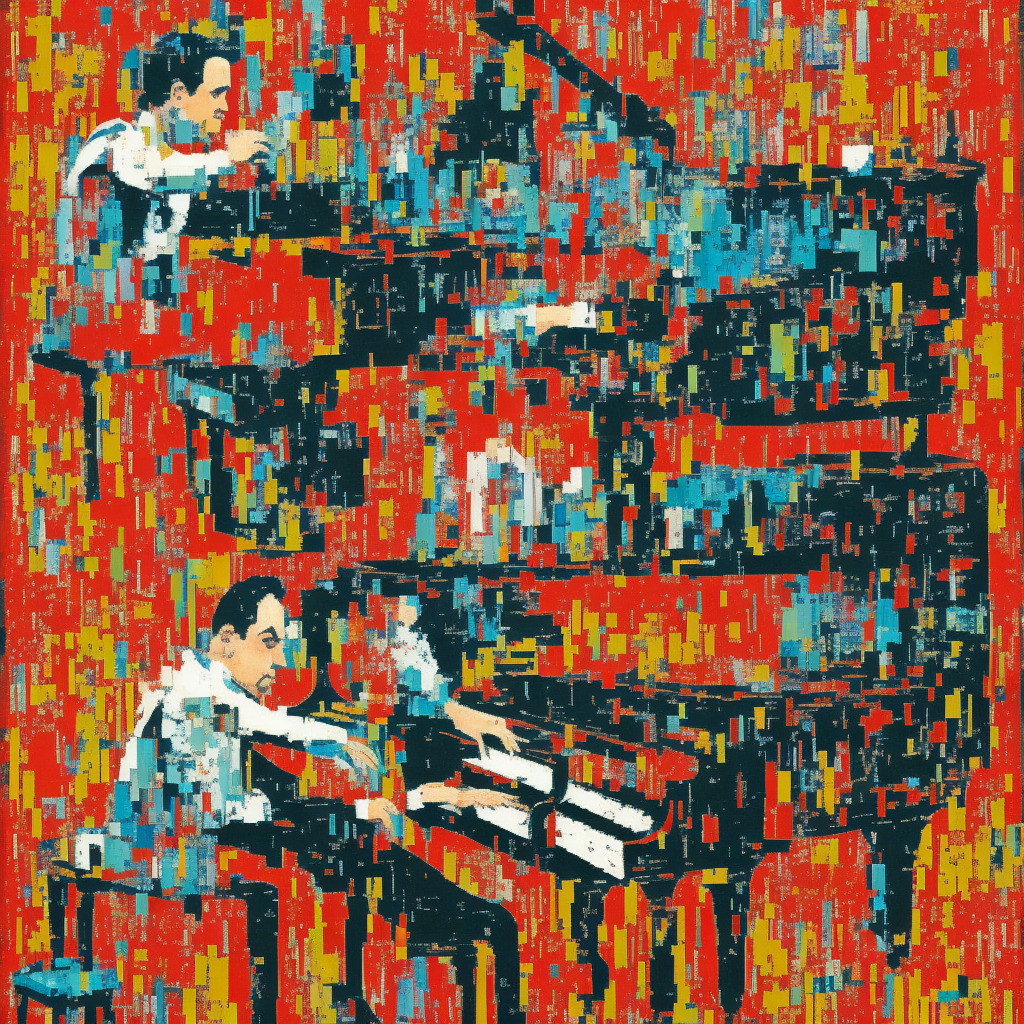? Did you know #Funkytown by Lipps Inc. was a worldwide sensation not only for its catchy beat, but also for its unique blend of R&B, funk, and disco? ? Time to revisit this iconic 1980 tune for a funky trip down memory lane! ? #LippsInc #80sMusicTrivia #DiscoFever Read about it: tinyurl.com/4svb4cn9
Electric Vibes from the 80s: Lipps Inc. and Their Classic Hit
Lipps Inc.’s “Funkytown” – A synth-driven ’80s sensation that pioneered post-disco electronic dance music and left a lasting impression on the genre.
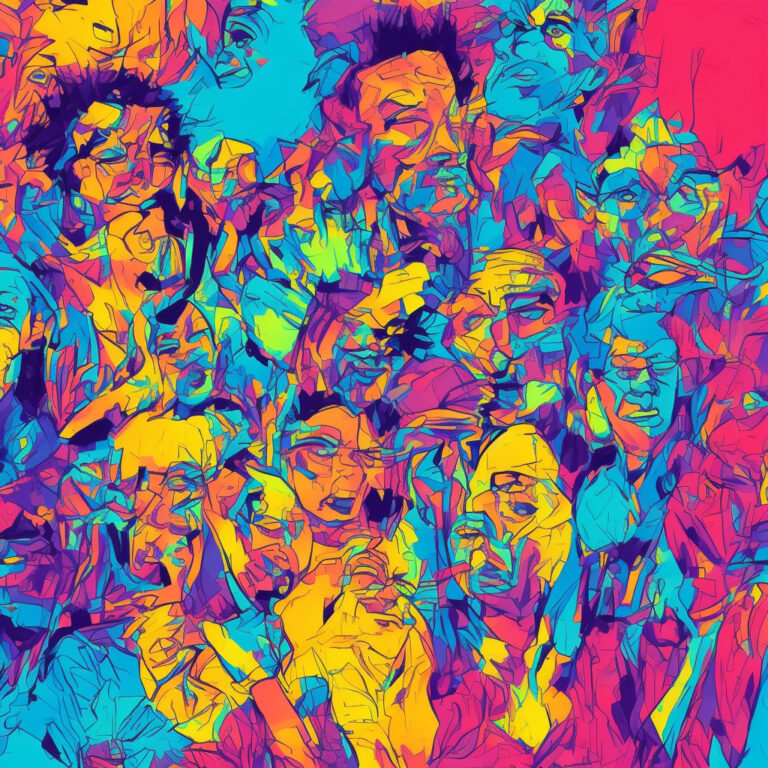
Formed in 1979, Lipps Inc. was a pioneer in post-disco electronic dance music, and their hit song “Funkytown” remains a staple of ’80s nostalgia. Hailing from Minneapolis, Minnesota, the band was a brainchild of musician, producer, and songwriter Steven Greenberg. What set them apart from their contemporaries was their unique blend of synthpop, funk, and R&B. Despite their brief existence, Lipps Inc.’s impact on electronic dance music is undeniable.
Steven Greenberg was the mastermind behind Lipps Inc. and “Funkytown.” As a multitalented artist, he not only produced and wrote the song but also played several instruments on it. Greenberg was joined by lead singer Cynthia Johnson, a former Miss Black Minnesota, whose powerful vocals became synonymous with the group. Another key contributor was guitarist David Rivkin, who later became a successful producer, working with notable artists such as Prince and Fine Young Cannibals.
“Funkytown” was released in 1980 as part of Lipps Inc.’s debut album “Mouth to Mouth.” The song quickly gained recognition and climbed the charts, ultimately reaching No. 1 on the Billboard Hot 100 and Dance Club Songs charts in the US. It also had success internationally, topping the charts in over 28 countries. The track’s infectious melody, driven by its synthesizers and Johnson’s commanding vocals, helped it become not only the band’s most successful song but also one of the most recognizable tunes from the 1980s.
While Lipps Inc. released three more albums after their initial success – “Pucker Up” (1980), “Designer Music” (1981), and “4” (1983) – they were never able to replicate the massive acclaim of “Funkytown.” Critics argue that the band’s limited discography and lack of subsequent hits resulted in them being labeled as a one-hit-wonder in the music industry. However, it is essential to recognize their role in the era of electronic dance music and the influence they had on future artists in the genre.
Although the band never received any prestigious awards or accolades, their contribution to music history is undeniable. “Funkytown” has been covered and sampled by numerous artists throughout the years, proving its lasting impact on the industry. The catchy tune has also appeared in various films and TV shows, embedding itself in pop culture.
In conclusion, Lipps Inc.’s “Funkytown” stands as a testament to the electric energy and creativity of the 1980s post-disco era. While the band’s moment in the spotlight may have been short-lived, their influence on electronic dance music and the enduring appeal of their classic hit should not be underestimated.
Chart-topping Disco Fever
Disco classic “Funkytown” by Lipps Inc. took the world by storm in 1980, dominating charts globally and keeping dance floors grooving for over four decades.
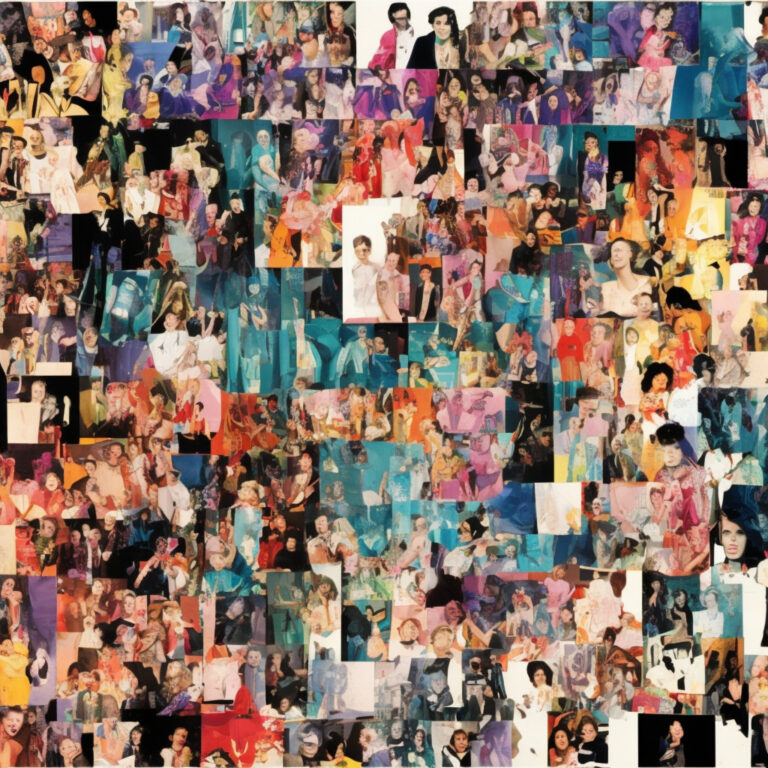
“Funkytown” by Lipps Inc. was released on March 11, 1980, as the lead single from their debut album “Mouth to Mouth.” This disco-infused track had more than just a catchy tune going for it – it quickly made its way up the charts, both in the United States and internationally.
Upon its release, “Funkytown” debuted at No. 79 on the US Billboard Hot 100 chart. It didn’t take long for the song to make its presence known, as it climbed the charts rapidly, reaching the No. 1 position just two months after its release, on May 31, 1980. It held onto the top spot for four consecutive weeks, solidifying its status as a disco classic.
The song’s chart success was not limited to the United States. “Funkytown” also reached No. 1 in Canada, Austria, and Switzerland, while also peaking within the top 5 in several other countries, including the United Kingdom, Germany, and Australia. It was a true international hit, reflecting the widespread appeal of the disco sound.
“Funkytown” also made its mark on the US Dance Club Songs chart, where it held the No. 1 position for three weeks. Its infectious rhythm and undeniable groove resonated with dance enthusiasts, making it a staple in dance clubs around the world.
Beyond its initial chart success, “Funkytown” has managed to maintain a lasting presence in popular culture. In 1986, the Australian band Pseudo Echo released a cover version of the song, which itself peaked at No. 6 on the US Billboard Hot 100 chart. Lipps Inc.’s original version has also been featured in numerous films, television shows, and commercials, ensuring that this iconic track continues to find new audiences more than four decades after its release.
Delving Into the Lyrical Depths of the Disco Era
Town to keep me movin’, keep me groovin’ with some energy
Well, I talk about it, talk about it, talk about it, talk about it
Talk about, talk about, talk about movin’
Gotta move on
Gotta move on
Gotta move on
“Funkytown” by Lipps Inc. is an iconic song with lyrics that capture the essence of the late 1970s and early 1980s, a time when disco and dance were at their peak. The song’s infectious melody and lyrics have cemented its place in the annals of music history.
The lyrics of “Funkytown” convey a sense of restlessness and desire for change. The protagonist feels a need to move to a place where they can unleash their energy and fully express themselves. This reflects the social and cultural shifts of the time, as people sought to escape the restrictions of traditional society and find personal freedom through music, dance, and self-expression.
The repetitive nature of the lyrics with lines like “talk about it, talk about it” emphasizes the urge to make a change and the need for movement. This can be seen as a reflection of the broader societal context of the era, marked by rapid social change, technological innovation, and urbanization.
During the late 1970s and early 1980s, discotheques and dance clubs were thriving cultural centers, providing a space for people to connect, let loose, and experience the freedom of self-expression. The lyrics of “Funkytown” embody this spirit of the time, capturing the essence of a generation hungry for change and eager to embrace new experiences.
In summary, the lyrics of “Funkytown” by Lipps Inc. encapsulate the zeitgeist of the disco era, celebrating the pursuit of personal freedom, movement, and self-expression. As the song continues to resonate with listeners today, it serves as a reminder of the enduring power of music to capture the mood and spirit of an era.
The Visual Side of Funkytown
Discover the visual legacy of Lipps Inc.’s “Funkytown” through fan-made videos, animation, and flash mobs that embrace the timeless groove of this disco classic.
While Lipps Inc.’s “Funkytown” was released in 1980, an official music video was never created. However, that hasn’t stopped fans from producing a variety of visual interpretations of the song. The track has become a staple in popular culture, and as such, numerous fan-made videos and YouTube tributes can be found celebrating the captivating tune.
One of the most notable fan-made videos for “Funkytown” is a montage-style collection of vintage dance clips from various television shows and movies. This particular video, uploaded by YouTube user MrPortorock, perfectly encapsulates the lively spirit and energy of the song by showcasing dancers grooving to the beat. The video has amassed over 4.5 million views since its upload in 2008, proving the lasting appeal of “Funkytown.”
Another unique visual interpretation of “Funkytown” can be found in the 2005 animated film, “Madagascar.” In the movie, the song is played during a pivotal scene in which the characters dance and embrace a new environment. The inclusion of “Funkytown” in the film introduced the song to a new generation of fans and further solidified its status as a classic disco track.
The song’s infectious beat and catchy lyrics have also made it a popular choice for flash mobs and dance routines. Numerous videos can be found online featuring groups of dancers performing choreographed routines to “Funkytown,” highlighting the song’s ability to bring people together and inspire them to get up and dance.
In summary, despite the absence of an official music video for Lipps Inc.’s “Funkytown,” fans have taken it upon themselves to create visual homages to the classic tune. From montages of vintage dance clips to choreographed flash mobs, “Funkytown” has proven its ability to stay relevant and beloved by fans of all ages.
The Genius Behind Funkytown: Steven Greenberg
Steven Greenberg, the composer of the iconic “Funkytown,” is well-regarded as a creative force in the world of music. Often considered a one-hit-wonder, Greenberg managed to capture the essence of the disco era in a single track. However, his talent extends beyond just the Lipps Inc. hit. He’s also the brains behind “Designer Music,” another infectious tune from Lipps Inc.’s 1981 album of the same name. Additionally, Greenberg has his own independent record label, October Records, which was founded in 1977. Though he may not have a long list of widely known compositions, there’s no denying the impact Greenberg has had on the music industry with his unforgettable creation of “Funkytown.”
A Legacy of Accolades and Appearances
“Funkytown”: An infectious anthem that conquered charts, transcended time, and ignited a legacy of covers, awards, and media cameos.
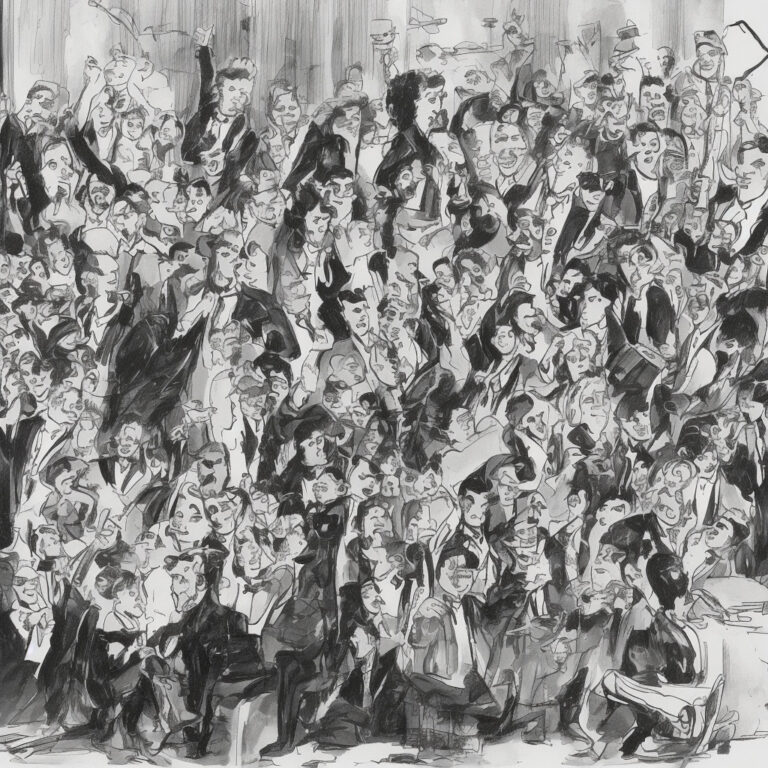
“Funkytown” has cemented its place in music history, garnering numerous awards and accolades since its release. The infectious tune reached the number one spot on the Billboard Hot 100 and the Dance Club Songs chart in 1980. It also held the top position in 28 countries, truly showcasing its universal appeal. The success of the song led Lipps Inc. to earn a nomination for the Best New Artist at the 1981 Grammy Awards, further cementing their status in the music industry.
The undeniable charm and energy of “Funkytown” have transcended time and permeated various forms of media. The song has been featured in numerous movies, TV shows, and video games, adding a touch of nostalgic funk to their respective soundtracks. Some of the most notable appearances include films like “Shrek 2” (2004), “Contact” (1997), and “The Dictator” (2012), as well as TV shows like “The Simpsons,” “Family Guy,” and “That ’70s Show.” Additionally, the song has made its way into the popular video game series, “Just Dance,” in the 2014 version, allowing a new generation of fans to groove along to its catchy beats.
One of the true marks of a classic song is its ability to inspire a multitude of cover versions, and “Funkytown” certainly meets this criterion. Over the years, several artists have taken a stab at reimagining the iconic track, showcasing its versatility and enduring appeal. In 1986, Australian band Pseudo Echo released a synth-rock version of the song, which reached the top spot on the Australian charts and entered the Billboard Hot 100’s top 10. Another memorable rendition was performed by British dance-pop group Alcazar in 2007, injecting the tune with a fresh, modern sound.
Despite the numerous reinterpretations of “Funkytown,” Lipps Inc.’s original version remains an iconic piece of dance music history. Its seemingly never-ending popularity and presence in various forms of media have ensured that the song will keep its place in the hearts of music lovers for generations to come.
Delving into the Musical Structure
“Funkytown” is a masterclass in the synth-driven disco-funk genre that ruled the airwaves in the late ’70s and early ’80s. The song is composed in the key of G minor, lending it a slightly dark and moody tonality, while still retaining its infectious danceability. The tempo is set at a brisk 122 beats per minute, providing the perfect backdrop for the energetic grooves that define the track.
The song’s chord progression is relatively simple and effective, following a repetitive i-iv-v pattern (Gm-Cm-D). This progression creates a solid foundation for the dynamic bassline and syncopated rhythmic elements to shine. The bassline follows the chord progression, accentuating the root notes of the chords and incorporating octave jumps to add depth and groove to the song.
One of the standout features of “Funkytown” is its utilization of the synthesizer, which was a groundbreaking instrument at the time. The main synth riff, played on a Minimoog, is instantly recognizable and forms the melodic hook of the track. The riff is a syncopated, staccato melody that is doubled by a funky guitar part, further enhancing the rhythmic interplay between the instruments.
The arrangement of the song is structured around a series of distinct sections, each with its own unique characteristics. The intro sets the scene with its pulsating bassline and synth riff, leading into the first verse where the vocals make their entrance. The chorus, which features the unforgettable “Won’t you take me to Funkytown” lyric, is characterized by its anthemic, sing-along quality.
Throughout the song, the use of syncopation and accents on off-beats contributes to the undeniable funky feel of the track. The drummer employs a tight, precise style, with a heavy emphasis on the hi-hats and snare to create a driving, danceable rhythm. Additionally, the use of handclaps and cowbell accents adds a playful, almost tongue-in-cheek element to the mix.
In conclusion, “Funkytown” is a prime example of the disco-funk genre, with its catchy synth riffs, infectious bassline, and energetic tempo. The song’s simple yet effective chord progression, creative use of syncopation, and innovative use of the synthesizer have solidified its place as a classic in the annals of dance music history.

